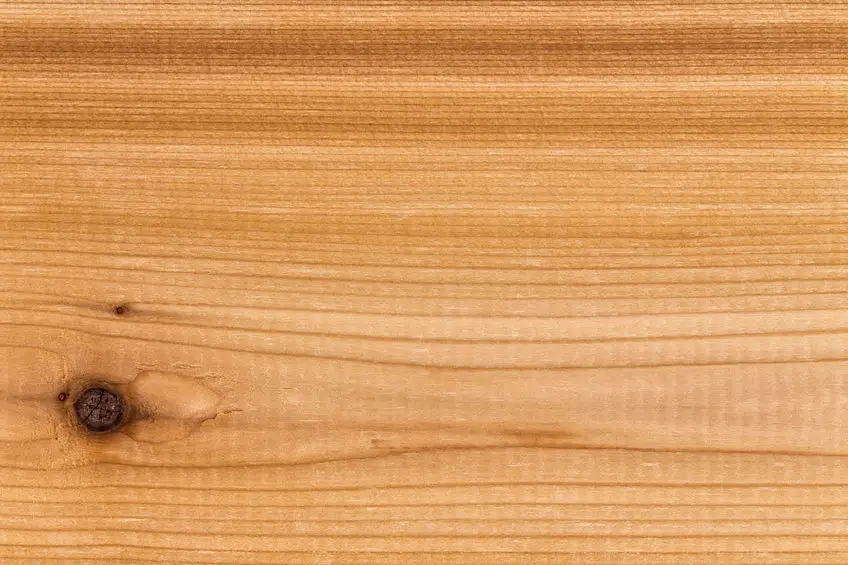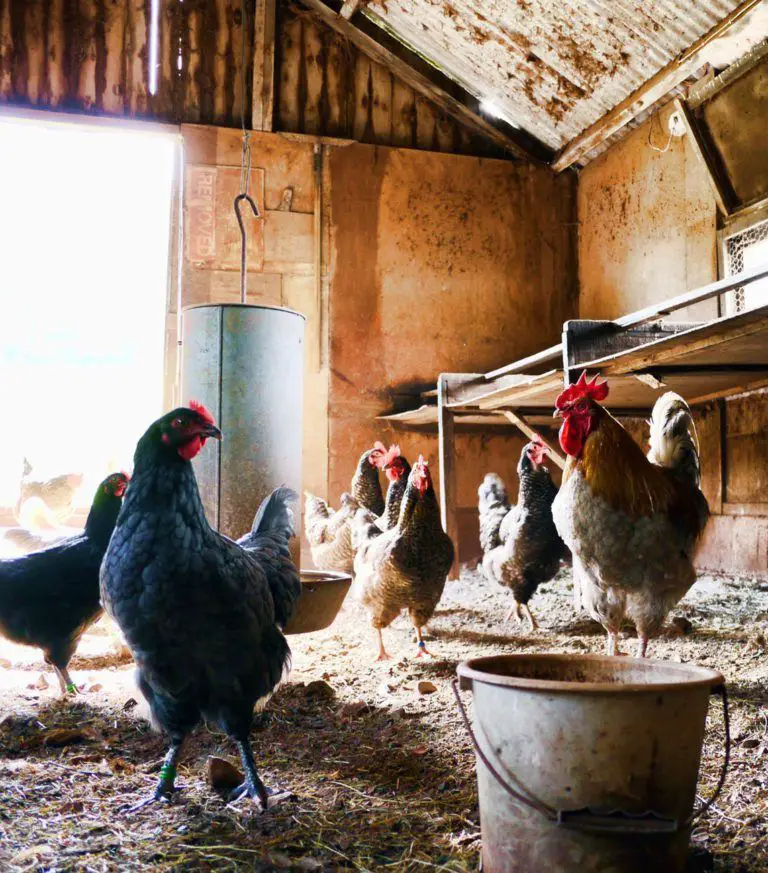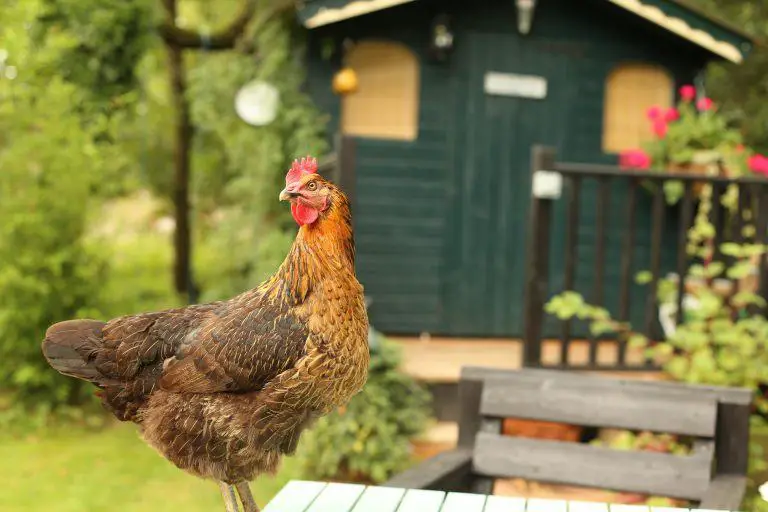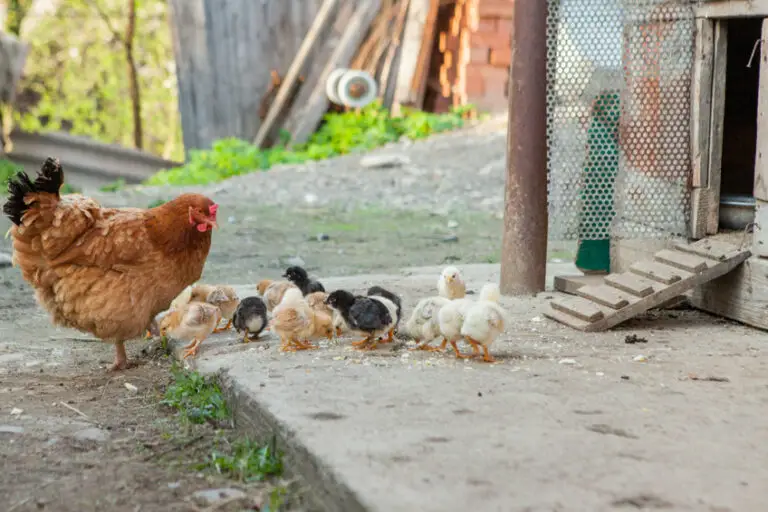Don’t Waste Time And Money. What Kind Of Wood Should I Use For A Chicken Coop?
So, you want to build a sweet pad for your brood but the question keeps popping up, “What kind of wood should I use for a chicken coop?” Well you’ve come to the right place because we are going to break down what you need to know about wood and what works best for coop construction.
For a complete guide to setting up your coop, complete with accessories and more, see our free guide.
Different Types Of Wood
To the average person, wood is wood. Most of us don’t know much about what type of wood it is, or what the best uses are for specific woods. More importantly, we may not know if it’s safe to have around chickens. The last thing we want to do is build a magnificent coop only to find out the wood is either toxic or not suitable for the outdoors.
In the lumber world, there are different types (categories) of wood. Let’s take a look at what those are and if they are safe or suitable to use in building a chicken coop. We have indicated next to each type of wood (in parentheses) whether or not it is safe, unsafe, or not recommended.
Hardwood
Hardwoods typically include woods such as oak, walnut, maple, hickory, cherry, and mahogany. There are numerous hardwoods, but we’ve only listed the most commonly used. Hardwood is just that, hardwood. These types of wood are highly durable.
Hardwood is more expensive and is used for special woodworking. Hardwood may not be the best option for those of us looking for affordability.
Hickory (Safe To Use)
Hickory is synonymous with smoking meats. Native American tribes made baskets and bows from hickory and also tapped the trees for their sweet sap.
Today, everyday items we use such as wood-handled tools, shovels, rakes, garden hoes, hockey sticks, fishing rods, skis, tennis racket frames, and various furniture items are made with hickory. If used to build a coop, it will need to be sealed with an animal-friendly sealant.

Oak (Safe To Use – Not Ideal For Outdoors)
Oak is perhaps one of the most popular woods used in furniture and hardwood flooring. However, it’s not an ideal wood for exterior use because it tends to react to dampness and dryness by shrinking or swelling.
Mahogany (Safe To Use – Not Ideal For Outdoors)
Mahogany is typically reserved for building furniture and fine woodworking. It is one of the more expensive woods, which makes constructing something out of mahogany an investment. It is not generally used for exterior builds.
Maple (Safe To Use: Not Ideal For Outdoors)
Maple is one of the most commonly used woods for furniture. Although it’s considered a hardwood, it dents easily. This wood is reserved for interior use because it can rot quickly and crack.
Walnut (Safe To Use – May Not Be Ideal For Outdoors)
Walnut is also a top-of-the-line wood that is quite costly. It is perhaps one of the hardest woods on the market. Cabinetry, furniture, and specialty woodworking projects are made with this wood. It has been known to be used for outdoor furniture. If used to build a coop, it will need to be sealed with an animal-friendly sealant.
Birch (Safe To Use)
Birch is also a very common wood because of its versatility for indoors and outdoors. Although it’s not ideal for staining as it tends to be a bit stubborn, once painted and sealed, it can be used for just about anything. If used to build a coop, it will need to be sealed with an animal-friendly sealant.
Softwood
The term “softwood” can be a bit misleading because some of the woods that happen to fall in this category are excellent to use in most outdoor construction projects. Softwood is much easier on the wallet compared to hardwood.
Redwood (Safe To Use)
Redwood is an ideal wood because of its natural ability to resist rotting. Railroad ties, wooden decks, fencing, cabinetry, sheds, and a host of other things are built from redwood. If used to build a coop, it will need to be sealed with an animal-friendly sealant.

Cedar (Unsafe – Not Recommended But With Caveat)
Cedar is one of those woods that has specific applications and may not be ideal for some projects. Cedar chests, closets, and trinket boxes are just a few things cedar is used for. The aroma that cedar omits is something most of us love; however, that aroma is due to a compound called terpene hydrocarbon.
When inhaled by chickens, it can cause respiratory problems. There are numerous claims online that cedar is safe to use around chickens as long as it’s sealed but to take that risk or not depends on a personal choice.
However, Cedar is considered a great wood for outdoor structures and can stand up to the elements quite well. So a workaround could be to build the frame of the chicken coop, cover the frame with plywood, then add cedar over the top. It can be installed like siding over a house. Shiplap or board and batton
Other than pressure treated lumber, it’s one of the best rot resistant wood types out there. The big take-away with Cedar, is not using Cedar shavings for bedding or in the nest boxes.
Pine (Unsafe – Not Recommended)
Pine is a cheaper wood used in construction and in building some furniture. It’s not an ideal outdoor wood to use because of its low resistance to rot. Pine also contains terpenes that can cause respiratory issues in chickens.
Pine can be used for framing, then add your preferred siding over the top.
Spruce (Safe To Use)
Spruce is widely used to produce paper. Fine pianos and string instruments like violins and violas have spruce incorporated. Boatbuilders use spruce, as does the whiskey industry, to construct the wooden barrels. Using this wood outdoors is an option, but it does require adequate sealing.
Engineered Wood
Engineered wood includes pressure-treated wood, plywood, MDF, and OSB. Though they have many benefits and are readily available, not all are recommended for chicken coops.
Pressure Treated (Unsafe – Not Recommended)
This wood is heavily treated with chemicals to resist rot and pests. Things such as decks, posts, fencing, outdoor buildings, etc., are constructed with this type of wood. It is in the mid to high dollar range and does not come cheap. Lumber yards may list this wood as SPF (spruce, pine, and fir.) This wood can be toxic when used around chickens.
If you use pressured treated 4×4 posts to anchor the coop into the ground, you should be fine. In fact, you’ll get a lot of life out of a pressure treated post. But it may not be wise to build your entire coop with it as the fumes can be toxic.
Some people may disagree with this, and that’s ok. We just know there are instances where chickens have gotten sick from the pest resistant chemicals in it.
There are other variables that come into play, like how much ventilation you have and whether you live in a hot or cold climate. If a coop gets hot inside, the fumes will be much worse, so adequate ventilation is important.
Since there are other suitable choices, we recommend one of the safer alternatives.
Plywood (Safe To Use)
Plywood is constructed by gluing thin layers of spruce, pine, and fir wood together. It may not be the prettiest wood to use, but it’s versatile and available in various thicknesses. When buying plywood, be careful to get the exterior rated with labels affixed to the wood (BCX, CDX, T-111.)
If used to build a coop, it will need to be sealed with an animal-friendly sealant or painted. This is important because once water penetrates into the wood, plywood will deteriorate rather quickly.
MDF (Not Ideal For Outdoors)
Medium-density fiberboard (MDF) is a made-made type of board that combines hardwood and softwood with resin. It’s prone to rot under moist/damp conditions and not intended to be used outdoors or in areas prone to humidity/moisture. Concerns of this engineered wood containing formaldehyde limit its use.

OSB (Not Ideal For Outdoors)
OSB (oriented strand board) is what many of us know as particleboard. It is somewhat similar to plywood; however, particles of wood are pressed together using resin and then heated to cure. It’s a budget-friendly alternative to use in place of plywood, but it too contains chemicals and is prone to rot if used outdoors.
Since OSB is more affordable than other types of plywood or lumber, it’s tempting to use it for a coop. Resist that temptation. The money savings aren’t worth it if your flock dies from the toxic fumes and you end up needing to build a new coop after just a few years.
If you want to use OSB on the inside of the coop, then install siding on the outside of it, go for it. This is a standard practice for building houses and other sheds. With siding on the outside, the OSB is protected and strengthens the coop.
You’ll want to add a vapor barrier, like Tyvek or roofing felt over the OSB before installing the siding to prevent moisture issues.
An excellent article describing the different types of siding and how to install them can be found at shedplans.org.
Pallet Wood (Use Caution)
Pallet wood is one of the leading sources of free-cheap lumber to use in various projects. You’ll find everything from a bed platform to outdoor furniture and playhouses constructed with these things.
Wooden pallets are often found stacked and sitting outside of businesses, by dumpsters, and in junkyards. But be careful when picking them up to repurpose because some may have a toxic treatment that is dangerous if used around pets (including chickens) and humans.
Pallets with “HT” should be avoided, as should any marked with “MB.” Both of these markings indicate a toxic chemical application has been applied to the pallet to ward off pests.
The Last “Cluck”
Who knew there were so many variables to consider when choosing wood to build a chicken coop? At least you have enough information now to purchase wood that’s safe, budget-friendly, and designed for the outdoors.
Good luck with your build and Happy Chickening!








My uncle manages a cabinet shop that makes only mahogany windows and doors. Is mahogany shavings safe for chickens?
Hello and thanks for your question. From our research, I see nothing that indicates it would be harmful but we couldn’t find a lot of specifics on Mahogany bedding. If it were me, I would go for it, maybe blending some mahogany chips into your current bedding to see if there seem to be any adverse reactions. If not, feel free to use it exclusively. Sounds like a great, affordable (free) option!
If I use a wood that you have indicated is “unsafe”, can I cover it with a sealant to make it “safe”? I was planning to use cast-off scrap wood of ALL kinds, and just use a pet-safe product to seal it, both to contain chemicals and create a waterproof surface. Will that work?
Hello! Sorry for the long delay in reply. My site was not informing me of new comments coming in. You ask a great question and may be better answered by painters or staff at the hardware store. If it were me, I’d feel comfortable using your pet-safe product over the scrap wood. With proper ventilation, it should be fine. Thanks for your comment!